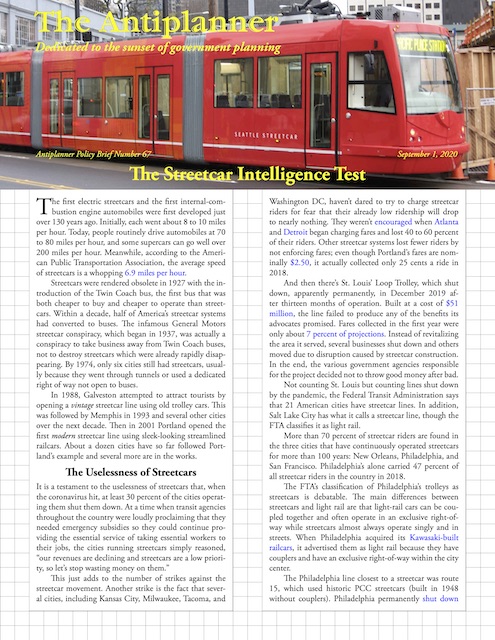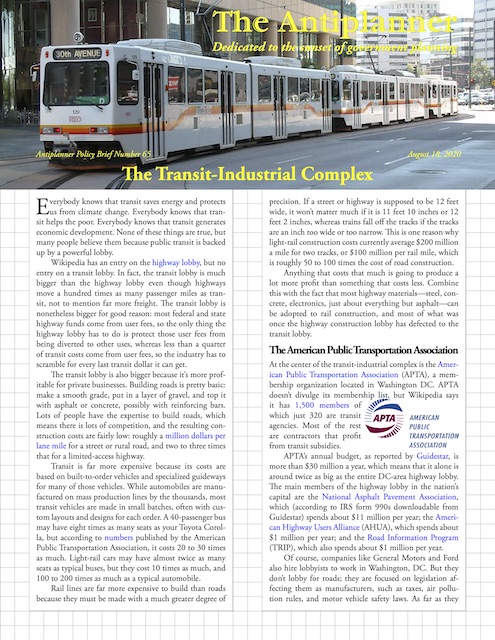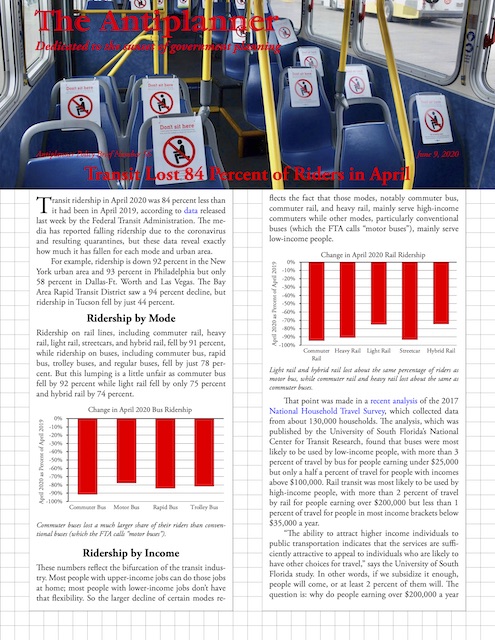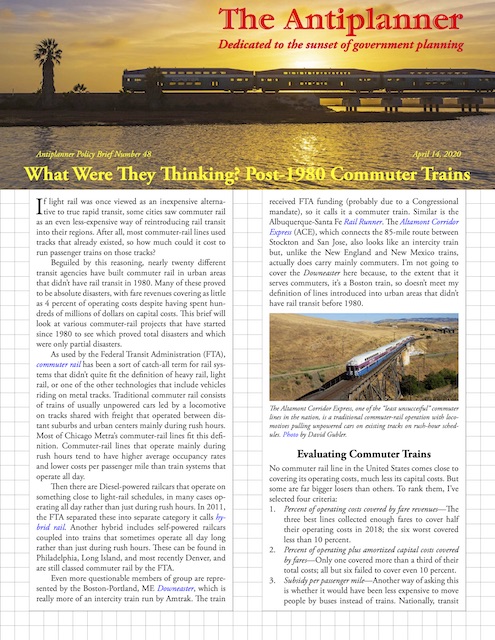When I was in high school—this would be about 1969—my social studies teacher asked the class to imagine we could design the city of Portland from scratch. What would it look like? I did a few calculations and realized that, if people were packed into higher densities, most of the city could be left as parks and open space. My vision called for a grid of high-rise clusters with a mixture of retail shops and apartments, accompanied by some single-family homes. Each cluster would be surrounded by forests and parks and connected with the others by rail transit so no one would have to drive. Industrial areas would be located in their own clusters.
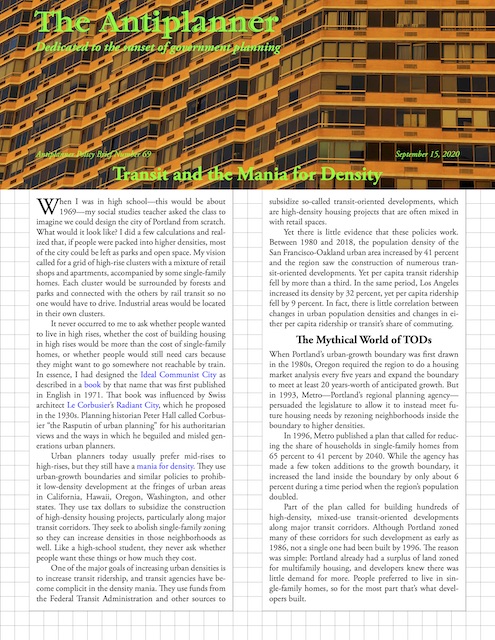 Click image to download a four-page PDF of this policy brief.
Click image to download a four-page PDF of this policy brief.
It never occurred to me to ask whether people wanted to live in high rises, whether the cost of building housing in high rises would be more than the cost of single-family homes, or whether people would still need cars because they might want to go somewhere not reachable by train. In essence, I had designed the Ideal Communist City as described in a book by that name that was first published in English in 1971. That book was influenced by Swiss architect Le Corbusier’s Radiant City, which he proposed in the 1930s. Planning historian Peter Hall called Corbusier “the Rasputin of urban planning” for his authoritarian views and the ways in which he beguiled and misled generations of urban planners. Continue reading

